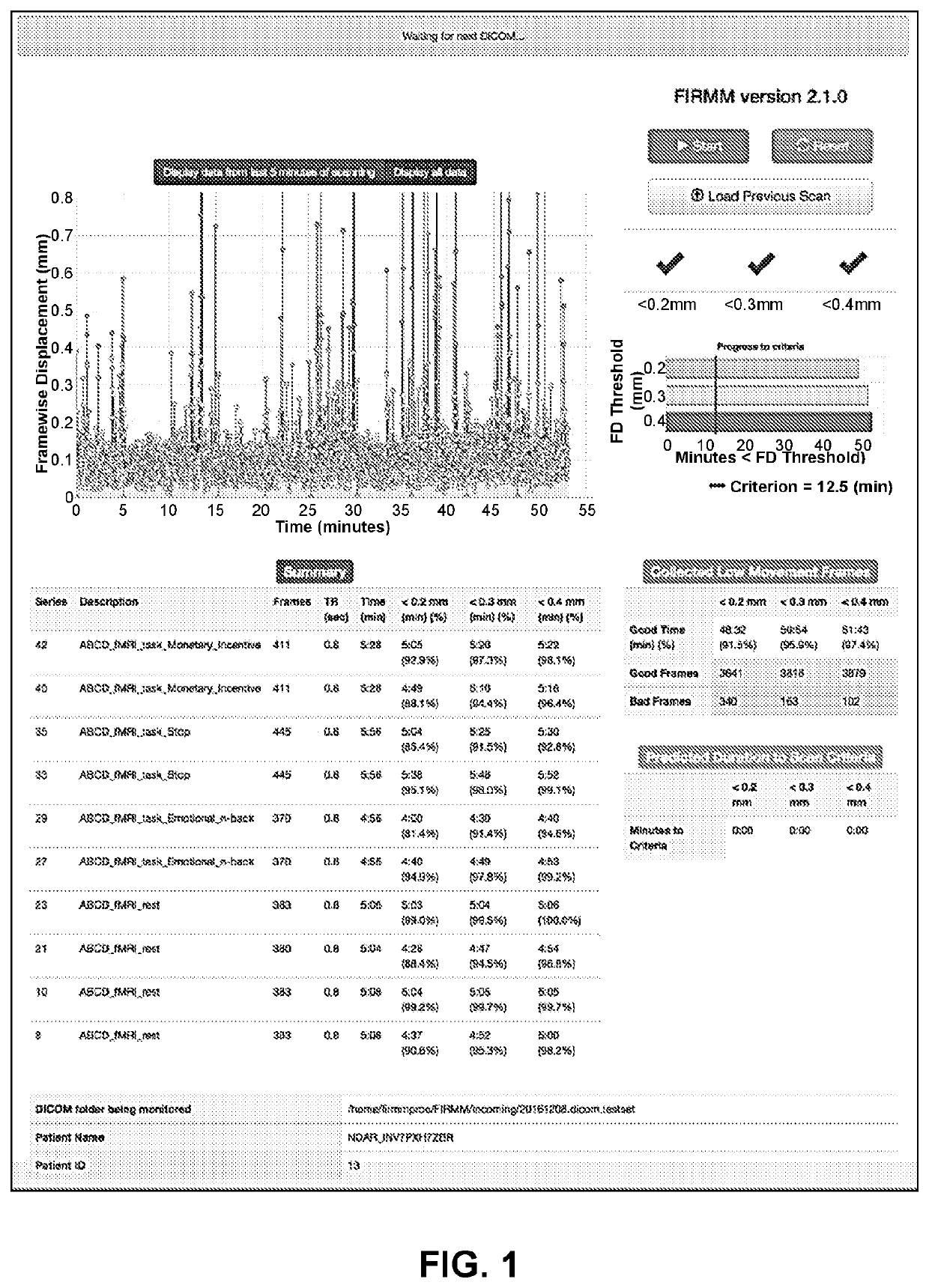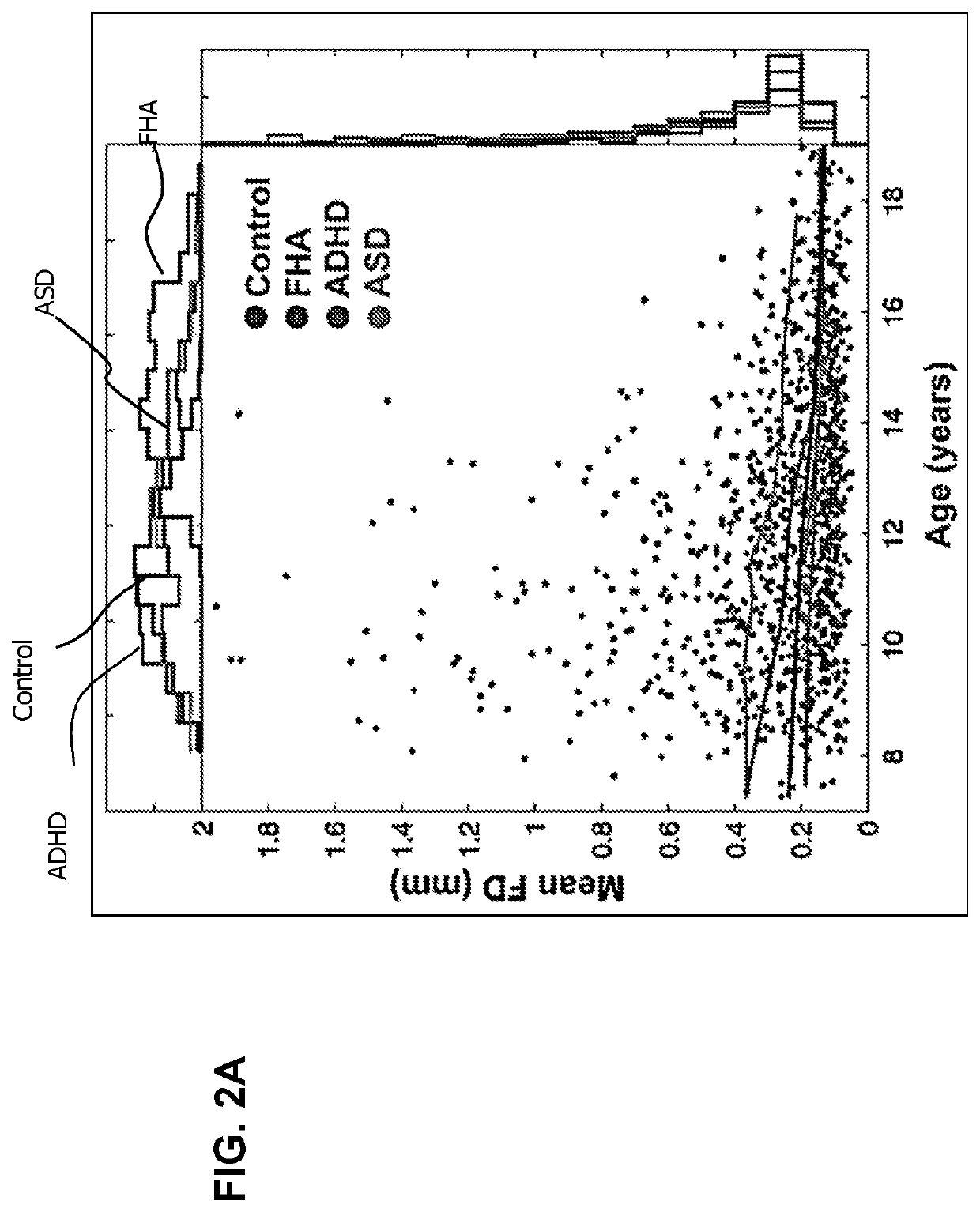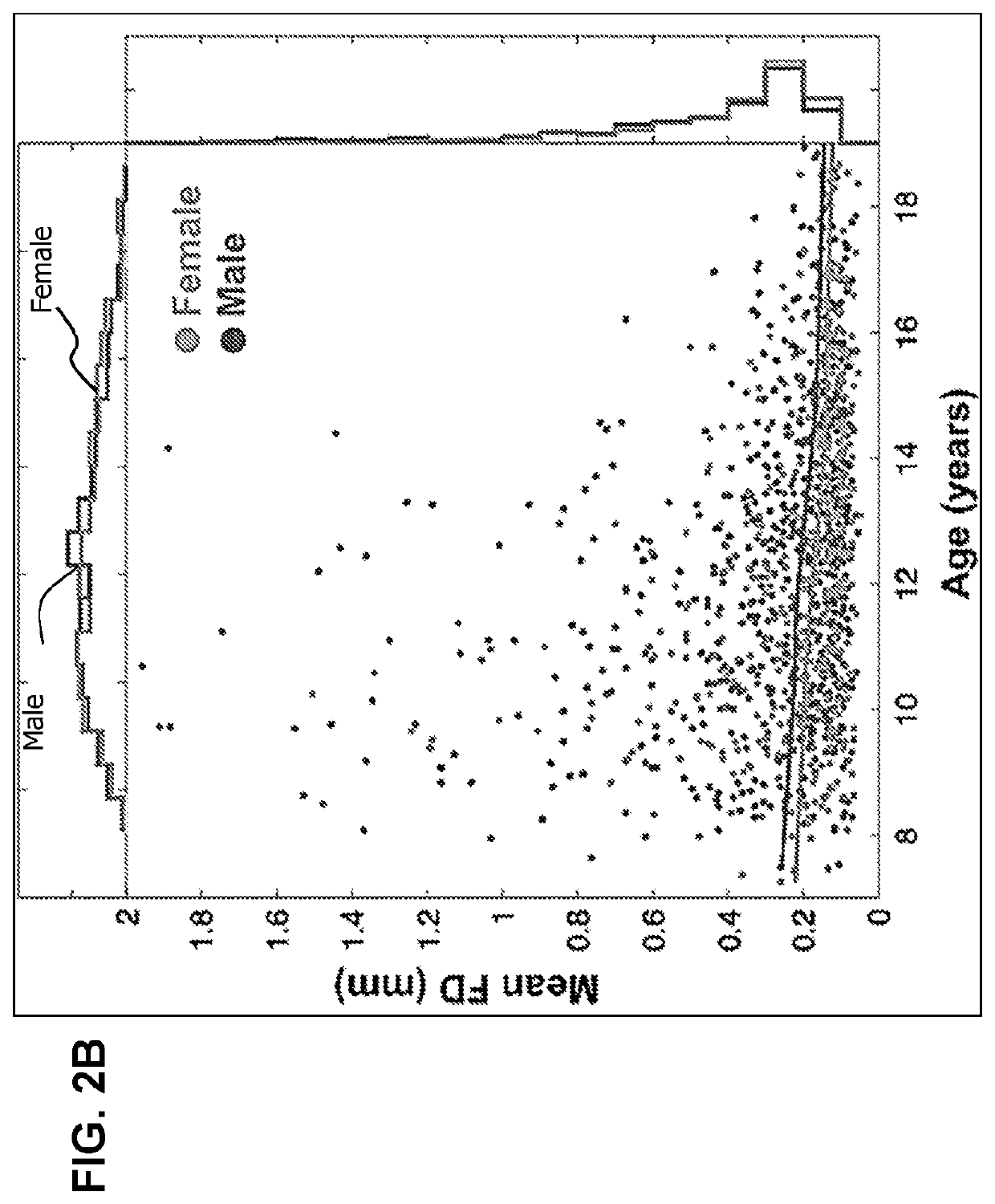Real time monitoring and prediction of motion in MRI
a real-time monitoring and motion prediction technology, applied in the field of magnetic resonance imaging, can solve the problems of affecting the quality of brain magnetic resonance imaging data, affecting the accuracy of mri data collection, and causing the most significant mri signal distortion,
- Summary
- Abstract
- Description
- Claims
- Application Information
AI Technical Summary
Benefits of technology
Problems solved by technology
Method used
Image
Examples
example 1
Summary
[0216]The results of these experiments demonstrated the validity of the disclosed FIRMM head motion prediction method. The FIRMM head motion prediction method provides accurate real-time FD calculations, and accurate predictions in regards to the required scan time needed to reach the low movement data criterion. Further, the disclosed FIRMM head motion prediction method can be used to reduce scan times, thereby reducing the time and costs associated with ‘overscanning.’ Additionally, the FIRMM head motion prediction method further reduces scan times by enabling operators to terminate scan early for those participants who are extremely unlikely to reach the necessary low movement data criterion.
Example 2
Evaluation of FIRMM System by Scanner Operators
[0217]To evaluate the usage of the FIRMM head motion prediction method (e.g., FIRMM), described above, by scanner operators, the following experiments were conducted. After applying FIRMM to extant datasets 1 and 2, FIRMM's utilit...
example 2
Summary
[0226]The results of these experiments demonstrated the validity of usage of the disclosed FIRMM head motion prediction method by scanner operators. The FIRMM head motion prediction method alerts operators to sudden changes (e.g., increased or decreased FD values) by providing scanner operators real-time feedback by, for example, displaying data in real-time on the operator's GUI. This allows operators to respond to the feedback provided by FIRMM by taking measures to intervene during the MRI scan.
Example 3
Effect of Head Position Feedback Provided to MRI Subjects on Head Motion Using FIRMM Method
[0227]To validate the effect of providing head position feedback to MRI subjects using the FIRMM head motion prediction method described above, the following experiments were conducted. The effects of viewing movie clips, viewing a fixation crosshair (e.g., rest), and receiving real-time visual feedback about head movement during the scans were investigated in 24 participants and adol...
example 3
Summary
[0253]The results of these experiments demonstrated the validity of presenting visual feedback to a subject undergoing an MRI scan based on real-time calculations of head motion using the disclosed FIRMM head prediction method. Real-time head motion feedback, in general, reduced motion during MRI scans in young participants. Specifically, in young participants, movie watching during MRI scans reduced head motion. The results of these experiments further disclosed that movies, not feedback, significantly altered functional connectivity (FC) MRI data. Thus, real-time visual feedback may be provided by FIRMM to the subject undergoing the MRI scan by (a) changing the colors of the crosshair and (b) obstructing the movie clip with color-coded rectangles of varying sizes to allow the subject, without intervention from the scanner operator, to adjust his or her body movements accordingly.
Example 4
Identification of Respiratory Artifacts in Movement Estimates in fMRI
[0254]To identify ...
PUM
 Login to View More
Login to View More Abstract
Description
Claims
Application Information
 Login to View More
Login to View More - R&D
- Intellectual Property
- Life Sciences
- Materials
- Tech Scout
- Unparalleled Data Quality
- Higher Quality Content
- 60% Fewer Hallucinations
Browse by: Latest US Patents, China's latest patents, Technical Efficacy Thesaurus, Application Domain, Technology Topic, Popular Technical Reports.
© 2025 PatSnap. All rights reserved.Legal|Privacy policy|Modern Slavery Act Transparency Statement|Sitemap|About US| Contact US: help@patsnap.com



